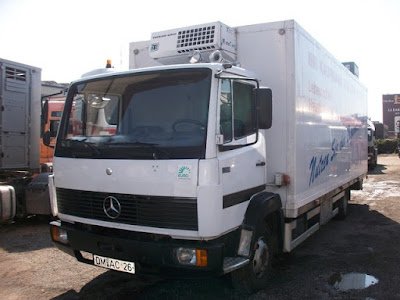The Importance of Space Management for Truck Drivers

Safety on the road is paramount for all drivers, but it is particularly critical for truck drivers due to the size and weight of their vehicles. One essential safety practice is space management — the ability to maintain adequate space around a truck at all times. By adhering to space management principles, truck drivers can significantly reduce the risk of accidents, ensuring the safety of themselves, other road users, and the cargo they transport.
What is Space Management?
Space management involves maintaining a safe distance between a truck and other vehicles on all sides, allowing enough room to maneuver, stop, or react to sudden changes in traffic conditions. This practice takes into account factors such as speed, road conditions, visibility, and the size of the vehicle.
Why Space Management is Crucial for Safety
- Preventing Collisions:
- Trucks require a longer stopping distance than smaller vehicles. Maintaining adequate space ahead ensures the driver has enough time to react to sudden braking or obstacles.
2. Avoiding Blind Spot Incidents:
- Trucks have large blind spots, commonly referred to as “no-zones,” on all sides. Proper space management reduces the risk of collisions caused by vehicles lingering in these areas.
3. Allowing for Emergency Maneuvers:
- Adequate space around the truck provides room for sudden lane changes or evasive actions to avoid accidents.
4. Improving Visibility:
- Maintaining space ensures a clear view of the road, helping the driver anticipate and respond to hazards more effectively.
5. Minimizing Stress:
- Proper space management reduces the pressure on truck drivers by providing a buffer zone, allowing for smoother and safer driving.
Key Principles of Space Management
- Maintain a Safe Following Distance:
- Keep a minimum of six seconds of distance between the truck and the vehicle ahead. Increase this distance in poor weather or heavy traffic.
2. Check Blind Spots Regularly:
- Use mirrors and conduct frequent checks to ensure other vehicles are not lingering in blind spots.
3. Plan Lane Changes Carefully:
- Signal intentions well in advance and ensure the lane is clear before merging or changing lanes.
4. Adapt to Road Conditions:
- Increase space in adverse conditions, such as rain, fog, or icy roads, as these reduce traction and visibility.
5. Be Mindful of Smaller Vehicles:
- Recognize that cars, motorcycles, and bicycles may not be aware of a truck’s limitations. Maintain extra space to accommodate their unpredictable movements.
Benefits of Space Management
- Enhanced Safety:
- Reducing the likelihood of accidents protects lives and prevents damage to vehicles and cargo.
2. Lower Costs:
- Avoiding collisions reduces repair expenses, insurance claims, and downtime.
3. Improved Reputation:
- Safe driving practices contribute to a positive image for drivers and their companies.
4. Compliance with Regulations:
- Adhering to space management principles aligns with road safety laws and industry standards.
Conclusion
Space management is a fundamental aspect of safe driving for truck operators. By maintaining adequate space around their vehicles, truck drivers can prevent accidents, protect lives, and ensure smoother road operations. Emphasizing this principle not only enhances safety but also contributes to a more efficient and professional haulage industry.



Comments
Post a Comment